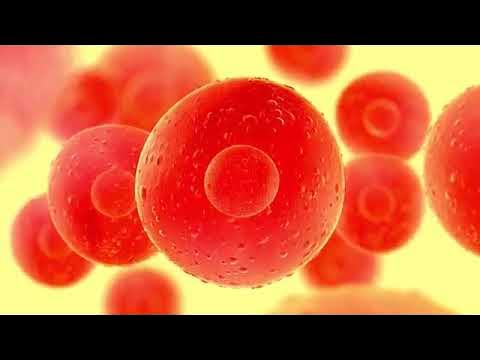Osteoporosis - causes, symptoms, diagnosis, treatment, pathology
Summary
TLDRيشير مصطلح هشاشة العظام إلى انخفاض كثافة العظام بسبب زيادة تكسير العظام مقارنة بتكوينها. تتأثر العظام الإسفنجية والعظام القشرية بشكل خاص، مما يزيد من خطر الكسور. يتم تشخيص هشاشة العظام باستخدام مسح DEXA لقياس كثافة العظام. الأسباب تشمل انخفاض مستويات الاستروجين والكالسيوم، والعوامل الوراثية، وسوء التغذية، وقلة النشاط البدني، وبعض الأدوية والأمراض. العلاج يشمل أدوية البايفوسفونات، وتيريباراتايد، ومدرات الثيازايد، والأدوية الأخرى مثل دينوسوماب ورالوكسيفين. الأنواع الشائعة هي هشاشة العظام بعد سن اليأس والشيخوخة، حيث تكون الكسور الفقرية الأكثر شيوعًا.
Takeaways
- 🦴 'Osteoporosis' is a condition characterized by increased bone breakdown compared to new bone formation, leading to porous and fragile bones.
- 🏗️ Bones have an external 'cortical' layer and an internal 'trabecular' or 'spongy' layer, which includes the trabeculae that provide structural support.
- 🌀 Cortical bone is composed of 'osteons' which contain 'Haversian canals' for blood supply and innervation, surrounded by concentric 'lamellae'.
- 🧬 The organic part of lamellae is made mostly of collagen, while the inorganic part, 'hydroxyapatite', is primarily calcium phosphate.
- 🔄 Bone is dynamic tissue undergoing 'remodeling' every few years, involving 'resorption' by osteoclasts and 'formation' by osteoblasts.
- 📈 Bone remodeling is regulated by serum calcium levels, influenced by parathyroid hormone (PTH), calcitonin, and vitamin D.
- 🚀 PTH increases bone resorption to raise serum calcium levels, while calcitonin promotes bone formation and decreases resorption.
- 💊 Vitamin D aids in calcium absorption, thus promoting bone formation and decreasing resorption.
- 📊 Peak bone mass, influenced by genetics and nutrition, is usually reached by age twenty to twenty-nine, earlier in females.
- 🚶♀️ Factors accelerating bone mass loss include low estrogen levels, alcohol, smoking, certain drugs, and physical inactivity.
- 👵 The two common types of osteoporosis are 'postmenopausal' and 'senile', with the former linked to decreased estrogen levels and the latter to osteoblasts' reduced bone formation ability.
- 🩺 Osteoporosis is often asymptomatic until a fracture occurs, with vertebral compression fractures being the most common.
- 🛑 Diagnosis is made using a DEXA scan, with a T score of -2.5 or less indicating osteoporosis.
- 💊 Treatment options include bisphosphonate drugs, teriparatide, hydrochlorothiazide, denosumab, and raloxifene.
Q & A
ما هو العظم الناجم (Osteoporosis)؟
-العظم الناجم هو حالة تسبب انخفاض كثافة العظم بسبب زيادة تدمير العظم مقارنة بتكوين العظم الجديد، مما يؤدي إلى ت疏松 في العظم وت減少し كثافة العظم حتى وقوف الكسر.
ما هي الهيكلة الداخلية للعظم؟
-تتكون العظم من طبقة خارجية صلبة تسمى العظم القرشي وطبقة داخلية من العظم الناعمة أو العظم الشبكي، يتكون من trabeculae توفر الدعم الهيكلي للعظم الشبكي.
ما هي الوظيفة الرئيسية لـ osteocytes في العظم؟
-تتواجد الخلايا العظمية (osteocytes) في الفراغات التي تسمى lacunae، وتلعب دورًا في تفاعل العظم وصيانةه.
كيف تحدث عملية إعادة صيانة العظم؟
-تتضمن إعادة صيانة العظم خطوتين: تدمير العظم من قبل الخلايا الخاصة المسماة osteoclasts، وتكوين العظم من قبل الخلايا الأخرى المسماة osteoblasts.
ما هي العوامل الحيوية التي تتحكم في إعادة صيانة العظم؟
-تعتمد إعادة صيانة العظم على مستويات الكالسيوم في الدم، التي تحافظ عليها من خلال توازن بين هرمون العظم (PTH)، وهرمون الكالسيتونين، وفيتامينات D.
كيف يؤثر هرمون العظم (PTH) على مستويات الكالسيوم في الدم؟
-يُنتج هرمون العظم من أطراف العظم في استجابة لانخفاض مستويات الكالسيوم في الدم، ويزيد تدمير العظم لإطلاق الكالسيوم في الدم.
ما هي العوامل التي تعزز خطر الإصابة بالعظم الناجم؟
-تعزز عوامل مثل انخفاض مستويات الإسترين بعد ال menoopause، وانخفاض مستويات الكالسيوم في الدم، واستهلاك الكحول، وتدخين، وبعض الأدوية مثل glucocorticoids، وheparin، وL thyroxine، وعدم النشاط الجسدي، خوفًا من بعض الأمراض مثل Turner syndrome و hyperprolactinemia و Klinefelter syndrome و Cushing syndrome و diabetes mellitus.
ما هي الأنواع المشتركة للعظم الناجم؟
-تتضمن العظم الناجم النوعين الأكثر شيوعًا: العظم الناجم بعد ال menoopause والعظم الناجم الشيعي.
ماذا يشير إلى التشخيص المبكر للعظم الناجم؟
-يُستخدم التشخيص المبكر للعظم الناجم جهاز DEXA لفحص كثافة العظم، ويقارن النتيجة مع كثافة العظم الطبيعية للبالغ الصحیح.
ما هي الأدوية التي تستخدم في علاج العظم الناجم؟
-تعتمد الأدوية التي تستخدم في علاج العظم الناجم مثل bisphosphonate مثل alendronate و rizendronate، و في الحالات المتقدمة، يُستخدم teriparatide، وهو هرمون تشريعي لهرمون العظم.
ما هي العوامل التي تحدد كثافة العظم الذرية؟
-تحدد العوامل التي تحدد كثافة العظم الذرية الجينات والغذاء، مما يعني أن استهلاك كافي من وتامين D يزيد كثافة العظم الذرية.
كيف يمكن تحليل كثافة العظم؟
-يمكن تحليل كثافة العظم من خلال استعمال جهاز DEXA، ويتم إعطاء نتيجة T، ويعد النتيجة السلبية 2.5 أو أقل كتشخيص للعظم الناجم.
Outlines

هذا القسم متوفر فقط للمشتركين. يرجى الترقية للوصول إلى هذه الميزة.
قم بالترقية الآنMindmap

هذا القسم متوفر فقط للمشتركين. يرجى الترقية للوصول إلى هذه الميزة.
قم بالترقية الآنKeywords

هذا القسم متوفر فقط للمشتركين. يرجى الترقية للوصول إلى هذه الميزة.
قم بالترقية الآنHighlights

هذا القسم متوفر فقط للمشتركين. يرجى الترقية للوصول إلى هذه الميزة.
قم بالترقية الآنTranscripts

هذا القسم متوفر فقط للمشتركين. يرجى الترقية للوصول إلى هذه الميزة.
قم بالترقية الآنتصفح المزيد من مقاطع الفيديو ذات الصلة
5.0 / 5 (0 votes)






